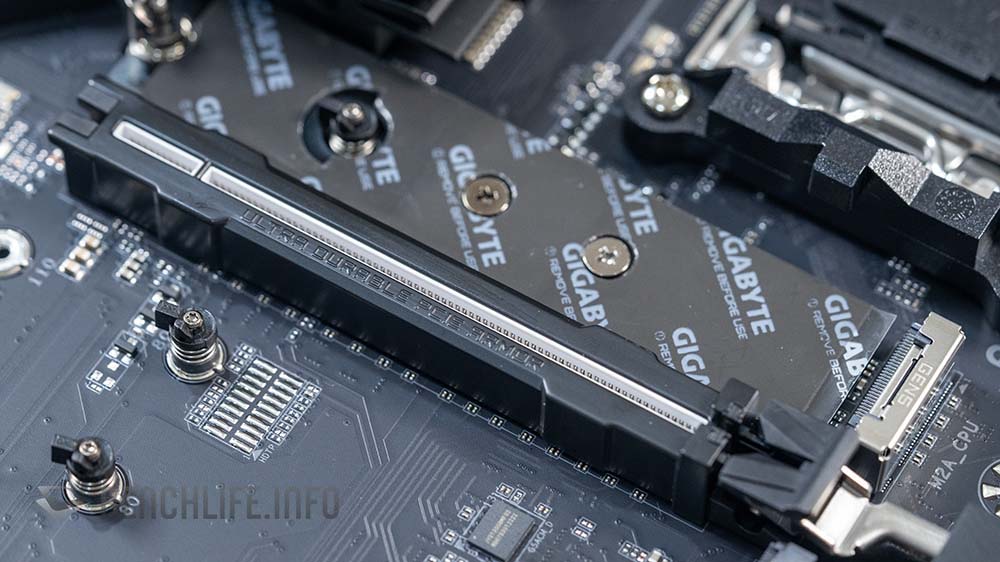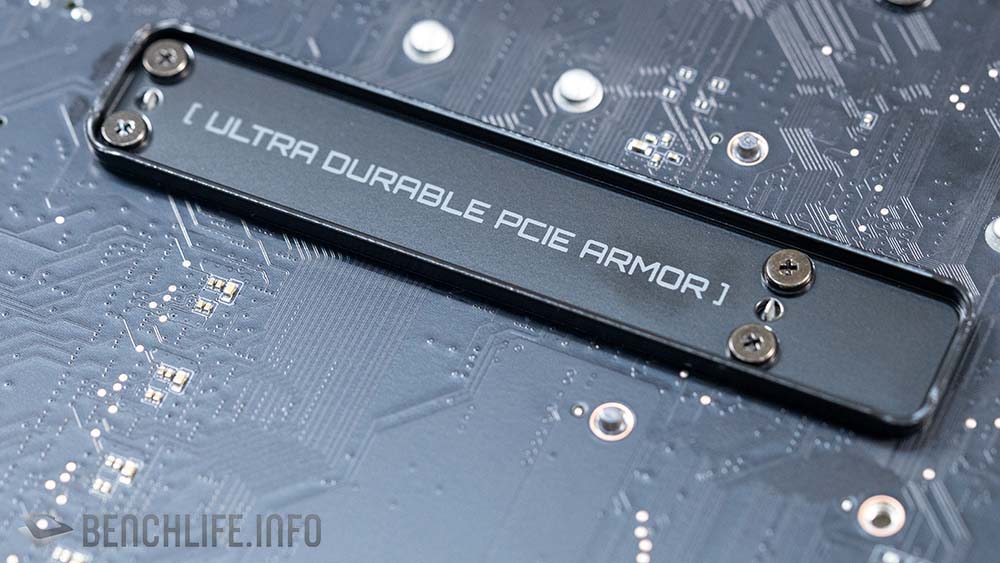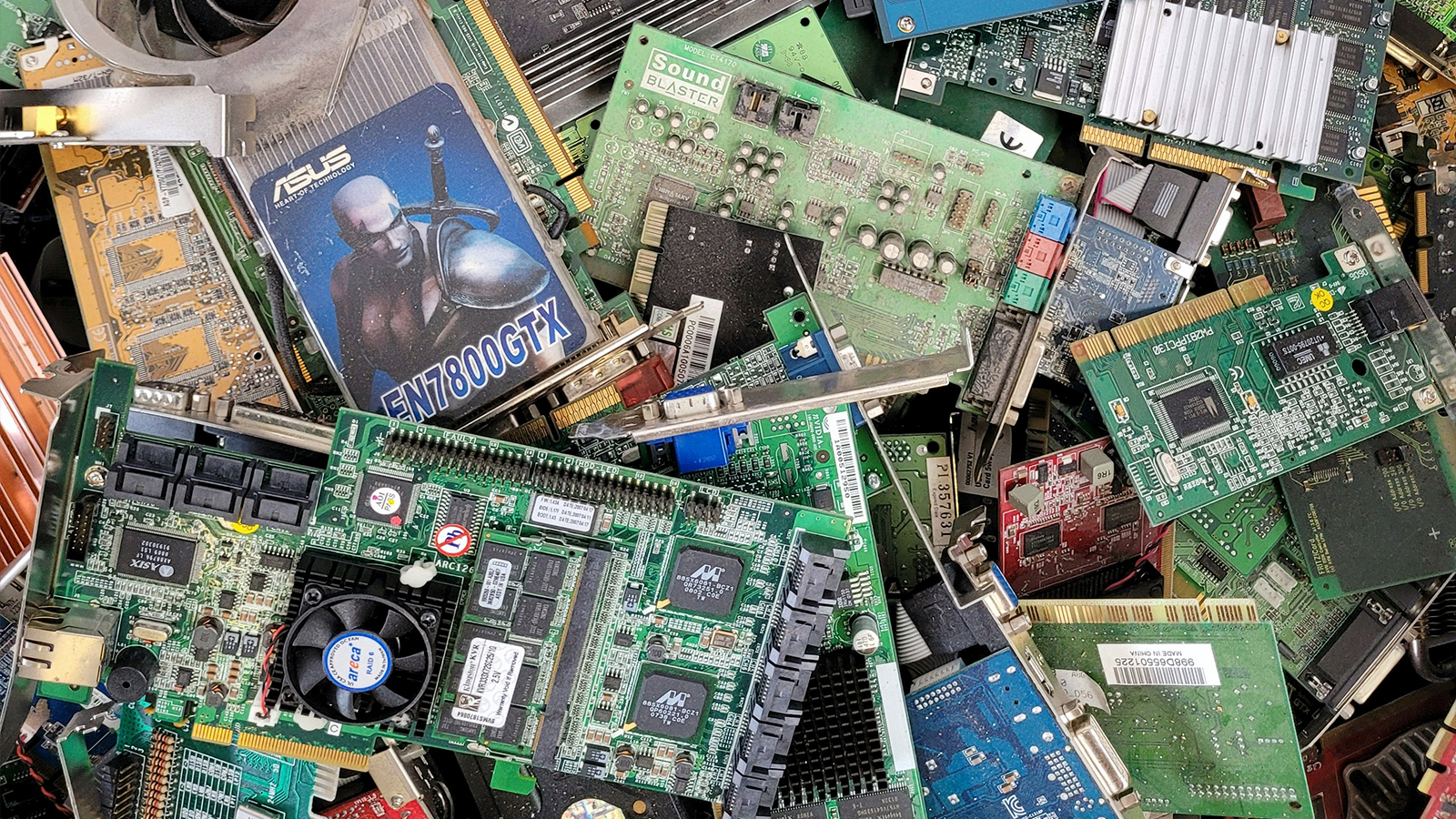Chinese publication Benchlife has shared a preview of the Gigabyte B650E Aorus Pro X USB4, which supports AMD’s next-generation Ryzen Zen 5 processors. One of the motherboard’s key selling points is the primary expansion slot, which can support graphics cards up to 128 pounds.
Despite being among the best graphics cards, the GeForce RTX 4090 has endured much controversy. First, there were reports of the 16-pin power connector suffering meltdowns. Later, accounts surfaced of the PCB cracking near the PCIe locking tab due to how bulky modern graphics cards have become. Gigabyte eventually revised the design of the brand’s GeForce RTX 4080 and GeForce RTX 4090 graphics cards. For extra measure, Gigabyte has implemented what the brand calls the “PCIe UD Slot X” in some of its high-end Intel and AMD motherboards.
If you’re new to Gigabyte motherboards, the PCIe UD Slot X is a reinforced expansion slot. The manufacturer claims the unique design provides 10X more strength to house even the heaviest graphics cards. The slot conforms to a one-piece design that’s fixed to the motherboard and screwed into place with a dedicated backplate. The PCIe UD Slot X also has an interior rubber strip to prevent nasty scratches on the graphics card’s PCB and features a zinc alloy material that serves as an electromagnetic shield for high-speed signals.
While the PCIe UD Slot X feature isn’t novel, this is the first time we’ve been given a specific metric of the maximum weight it can withstand. One trend we’ve seen is that graphics cards are becoming larger and more power-hungry. The transition from the GeForce RTX 30 series (Ampere) to the GeForce RTX 40 series (Ada Lovelace) is a perfect example. Although there are early whispers that the forthcoming GeForce RTX 50 series (Blackwell) likely won’t be any slimmer, 128 pounds is overkill.
Moreover, the initial PCB cracking was caused by the design of the cutout, which didn’t mitigate the weight of the graphics card. So, while Gigabyte’s PCIe UD Slot X supports up to 128 pounds, it still won’t impede PCB cracking because the problem lies in the graphics card and not the expansion slot. There weren’t any reports of the expansion slot breaking. It was always about the graphics card’s warping or the PCB cracking.
Perhaps the 128 pounds refers to impact load, which would make sense. A more sturdy expansion slot will help with shipping and transportation, especially in the case of pre-built machines. But then again, if the fall is high enough, it won’t matter if the expansion slot can accommodate up to 500 pounds because the graphics card would probably break. In a situation like this, many would prefer that the expansion slot come off the motherboard rather than fracturing the graphics card, which, in most cases, is the more expensive hardware.
As Computex 2024 approaches, we’ll likely have more information on Gigabyte’s upcoming motherboards for Zen 5 processors. Maybe the vendor will provide more details on the expansion slot. Who knows, we might even get a live demonstration, and Gigabyte can prove us wrong that it’s not just a marketing gimmick.








